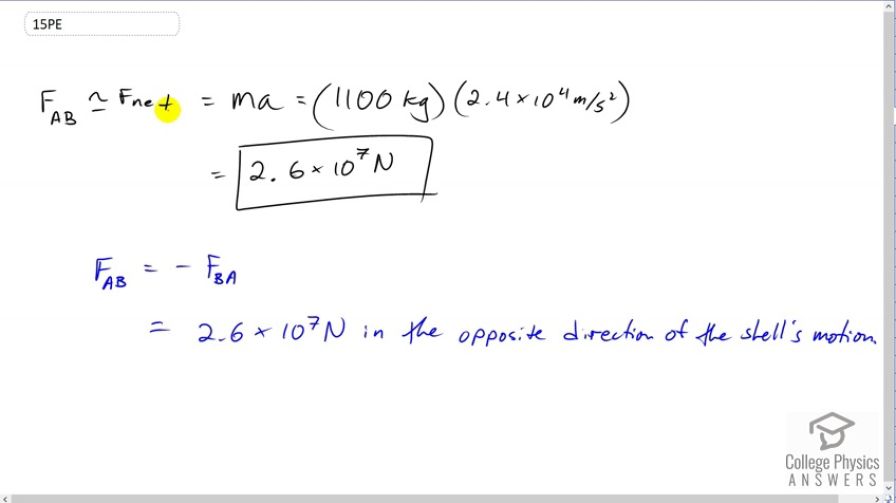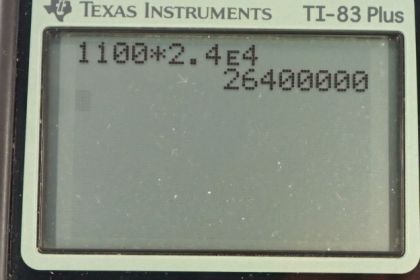is the force exerted on the shell due to the ship, which also is the magnitude of the force exerted on the ship due to the shell. Newton's Third Law reminds us that the magnitude of the force exerted by one object (ship, say) on another object (like a shell) is the same as the magnitude of the force exerted by the other object (shell) on the first object (ship).
Solution video
OpenStax College Physics, Chapter 4, Problem 15 (Problems & Exercises)

Calculator Screenshots
Comments
Could you please share the explanation and answer to the second part of the question? Thank you.
Hi Alicia, I clarified in the answer that the force on the shell due to the ship is the Newton's Third Law counterpart to the force exerted on the ship due to the shell. These two forces have equal magnitudes, but they're in the opposite direction. The ship accelerates the shell in what we'll take to be the positive direction, whereas the shell accelerates the ship in the opposite direction with the same magnitude of force.
Hope this helps,
Shaun


